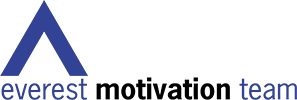Here are three stories, and three tips on how to make your team or organisation leaner, and more effective.
AGI Schutz, a division of American Greetings Company, makes custom merchandising displays for greeting cards. After a financially difficult time a few years ago, they knew it was vital to regain stability and efficacy. Dennis Tarlton, director of manufacturing, had heard about lean manufacturing and consulted a number of experts , and applied the learning to the organisation. Results from just five months of these activities included freeing up 10 percent of the labour force for other efforts, creating excess capacity for growth, and releasing up to 15,000 square feet of floor space. Tarlton was quoted as saying that in the period, ROI was 2.5 times the cost of the consulting and training programmes
BusinessWeek and IDEA (Industrial Design Excellence Awards)this year announced their winners in a variety of categories, and Apple won a number of Gold and Silver awards. Judge Pierre-Yves Panis said this: “The iPod’s Shuffle’s simplicity comes from drastically narrowing choices (or making them for us). We get to give up responsibility of having to navigate and choose and with that comes freedom and lightness”. Fellow judge Tucker Viemesiter said “Today Apple is the leader ( of the design world )….. Their design philosophy is getting close the ultimate “less is more.”
In Feb 2000, two Singaporean mountaineers made the first successful all-Singaporean ascent of Aconcagua 6962m, the highest summit of the Americas, in lightweight style. It was the first, after five attempts by other parties. From planning to execution, the team relied on working what could be left behind or given up, in order to make the ascent swift; and this included stripping down to lightweight, detail free packs, smaller rations, giving up margins of safety in terms of supplies, reserves and backups common in major expeditions.
Three stories, the last being a personal one, my being the organiser of that landmark Aconcagua expedition ( alas, the success of which has yet to repeated by a Singapore group ). After a decade in the corporate world, and 55 expeditions and ascents , including many ‘ lean’ and hungry ones, what have I learnt about going lean?
We learn that we can, in spite of ourselves, produce the same ( or better ) results with fewer resources. How do we do it? Central to the theme of climbing ‘ light’, the speedy mountaineer has to adopt what I call the Alpinist Attitude. Excess weight is the enemy , as declared by legendary French mountain guide Gaston Rebuffat. But go too far, and results will , inevitable suffer. Teams pounded by hostile corporate and climatic conditions will not survive without reserves. Whole expeditions fold up and go home because of supplies being pared too thin. Winning using the Alpinist Attitude carries a degree of risk, but a whole new horizon about achieving big goals with far less than your nearest competitor.
Lesson #1: Determine the scale of the objective, and assess the actual minimum of resources to achieve this goal; practice on less critical intermediate goals first, then apply to the big game. You may surprise yourself with the margin of spare capacity you end up with at the end. Most critical is the initial commitment to do it with less. Don’t ‘ try’ it with less, just commit to doing without certain things not truly critical for success
Lesson #2: Divide your resources into ” must have” and ” nice to have”; and consider what you need to ditch to go lean. Also consider whether some ” must have’ items, can double up to be a ‘ nice to have feature ‘. For example, spare headtorch batteries ( ‘ must have ‘ ) can double as camera ( nice to have ) batteries , if your camera uses the same type of battery.
Lesson #3: Calculated suffering may be required . In order to succeed in getting to the top. the final push may demand great SHORT TERM sacrifices in terms of effort, suffering, deprivation discomfort to a team or individual. Classic examples include going all out to meet or exceed quarterly deliverables of a critical new product; and going for the summit of a peak with very limited time left to climb the mountain. Warning: Don’t expect to keep repeating this practice repeatedly without an opportunity for teams and resources to recharge – or face total collapse of your venture.
